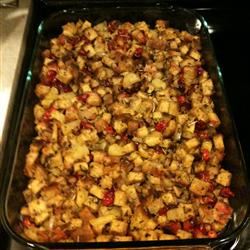**Homemade Vegetable Stock: A Culinary Symphony of Flavors**
Vegetable stock, the cornerstone of countless culinary creations, is an essential ingredient that elevates the taste of soups, stews, sauces, and gravies. It's a symphony of flavors, a delicate balance of sweetness from carrots and onions, earthiness from celery and mushrooms, and a subtle hint of peppercorns and bay leaves. This versatile stock forms the foundation of many dishes, adding depth and richness to your cooking.
This article presents a collection of homemade vegetable stock recipes, each tailored to suit different preferences and dietary needs. Whether you're a seasoned chef or a home cook looking to enhance your culinary skills, these recipes will guide you in crafting a flavorful and nutritious vegetable stock that will transform your cooking.
**Recipes Included:**
1. **Classic Vegetable Stock:** This recipe forms the foundation of many dishes, providing a rich and savory base for soups, stews, and sauces.
2. **Roasted Vegetable Stock:** Roasting the vegetables intensifies their flavors, resulting in a stock with a deep and complex taste.
3. **Slow Cooker Vegetable Stock:** This hands-off approach allows the vegetables to simmer gently, extracting their flavors over time.
4. **Vegan Vegetable Stock:** Created without any animal products, this stock is perfect for those following a vegan or plant-based diet.
5. **Instant Pot Vegetable Stock:** Utilizing the convenience of a pressure cooker, this recipe delivers a flavorful stock in a fraction of the time.
6. **Low-Sodium Vegetable Stock:** This recipe caters to individuals seeking a reduced-sodium option, maintaining flavor without compromising health.
7. **Vegetable Stock with Herbs and Spices:** This recipe incorporates a variety of herbs and spices, adding an extra layer of complexity and aroma to the stock.
8. **Vegetable Stock with Asian Flavors:** Inspired by Asian cuisine, this stock features ingredients like ginger, lemongrass, and soy sauce, creating a unique and flavorful base for Asian-inspired dishes.
9. **Vegetable Stock with Mushrooms:** The addition of mushrooms imparts an earthy and umami-rich taste to the stock, making it ideal for soups, stews, and sauces with a bold flavor profile.
10. **Vegetable Stock with Tomatoes:** This recipe incorporates the bright and tangy flavor of tomatoes, resulting in a stock that adds a vibrant touch to various dishes.
These recipes offer a diverse selection of homemade vegetable stock options, ensuring that you find the perfect stock to complement your culinary creations.
HOMEMADE VEGETABLE STOCK

Making stock is a great way to use vegetable trimmings that would otherwise be tossed into the trash.
Provided by Martha Stewart
Categories Food & Cooking Soups, Stews & Stocks Soup Recipes
Yield Makes 3 quarts
Number Of Ingredients 10
Steps:
- In a medium stockpot over medium-high heat, melt butter and olive oil. Add onion, and cook, stirring, until caramelized, about 8 minutes. Add carrots, parsnips, and celery; cook until tender, about 15 minutes.
- Wash and drain chard thoroughly. Chop into 1-inch pieces. Add to the vegetable mixture. Then add 3 quarts plus 2 cups cold water, thyme, parsley, and bay leaf. Bring to a boil, reduce heat, and let simmer about 1 hour; liquid should be highly flavored.
- Remove from heat, and strain stock through a fine sieve, pressing on vegetables to extract juices. Discard vegetables. Stock can be refrigerated for 3 to 4 days or frozen for up to 3 months.
HOMEMADE VEGETABLE BROTH / STOCK (LOW SODIUM)
Stop buying those cans of broth; making your own is SO EASY you'll freak. And, about one million times better for you, too. This I make is low-sodium style. I don't like salty broths; if I need to, I'll just add salt to the dish I am making while using the broth. But if you like a salty broth, add more salt than what I put in...
Provided by Monica H
Categories Other Sauces
Time 3h5m
Number Of Ingredients 12
Steps:
- 1. Wash veggies, rinsing off any dirt. Peel onion, but don't need to peel any of the others. Chop onion into large chunks.
- 2. Roughly chop veggies except for garlic, tomato and jalapeno; don't chop too small, just enough to fit them into the pot. Bell pepper can be cut into 2 or 3 chunks. Add jalapeno whole. Don't peel the carrots. Add all to stock pot with water.
- 3. Chop off ends of garlic. Add to pot, peel and all.
- 4. Add salt and soy sauce. (You can add any other vegetable you have on hand; I added fennel, green onions and cherry tomatoes because I had a lot left over. The beauty of broth making is that you can utilize all your leftover veggies into it).
- 5. Cover and simmer for about 2 - 3 hours, until veggies are tender and broth is flavorful.
- 6. Turn off heat, move pot away from burner, leave covered, and let cool for about 30 minutes.
- 7. Strain away the vegetables, leaving a clean broth behind.
HOMEMADE VEGETABLE STOCK RECIPE BY TASTY
Instead of throwing away your vegetable scraps, collect them in a storage container and keep them in the freezer to make great tasting stock from scratch. It's quick to make and works great for soups, gravies, and even meatless risotto. The Earth will thank you for making less waste!
Provided by Katie Aubin
Yield 8 cups
Number Of Ingredients 8
Steps:
- Reserve any parts that you are trimming off or peeling away (including tops, bottoms, skins, and stems) from the vegetables and herbs suggested above. (Avoid scraps from vegetables like Brussels sprouts, broccoli, or cauliflower, as their strong flavors can overpower your stock.) Place the scraps in a one-gallon airtight storage container, and keep them in the freezer for up to six months. You can add many other vegetable and herb scraps, including corn cobs, winter squash, zucchini, summer squash, beet greens, fennel fronds, chard stems, lettuce, parsnips, green beans, pea pods, bell peppers, eggplant, asparagus, and herbs like dill, thyme, parsley, cilantro, and basil.
- Keep adding scraps until the storage container is full.
- Transfer the contents of the container into a large pot and fill three-quarters of the pot (or until the scraps just start to float) with water.
- Bring water to a boil and then let it simmer for 30 minutes.
- Using a sieve, strain the stock to remove the solids. Let stock cool completely.
- Stock can be refrigerated in an airtight container for up to 4 days, or frozen for up to 3 months.
- Enjoy!
Nutrition Facts : Calories 0 calories, Carbohydrate 0 grams, Fat 0 grams, Fiber 0 grams, Protein 0 grams, Sugar 0 grams
Tips:
- Use a variety of vegetables: The more types of vegetables you use, the more flavorful your stock will be. Some good options include carrots, celery, onions, leeks, garlic, and tomatoes.
- Roast your vegetables before simmering them: Roasting the vegetables will caramelize them slightly, which will add a rich, deep flavor to your stock.
- Use fresh herbs: Fresh herbs will add a lot of flavor to your stock. Some good options include thyme, rosemary, bay leaves, and parsley.
- Don't overcrowd the pot: When you're simmering your vegetables, don't overcrowd the pot. This will prevent the vegetables from cooking evenly and will make your stock less flavorful.
- Simmer your stock for at least 30 minutes: The longer you simmer your stock, the more flavorful it will be. For a richer flavor, simmer it for up to 2 hours.
- Strain your stock before using it: Once your stock is done simmering, strain it through a fine-mesh sieve to remove any solids. This will make your stock smooth and flavorful.
Conclusion:
Homemade vegetable stock is a delicious and versatile ingredient that can be used in a variety of recipes. It's a great way to use up leftover vegetables, and it's also a healthier alternative to store-bought stock. With just a few simple ingredients and a little bit of time, you can make your own homemade vegetable stock that is packed with flavor. So next time you're making a soup, stew, or sauce, reach for your homemade vegetable stock instead of store-bought. You'll be glad you did!
Are you curently on diet or you just want to control your food's nutritions, ingredients? We will help you find recipes by cooking method, nutrition, ingredients...
Check it out »
You'll also love










